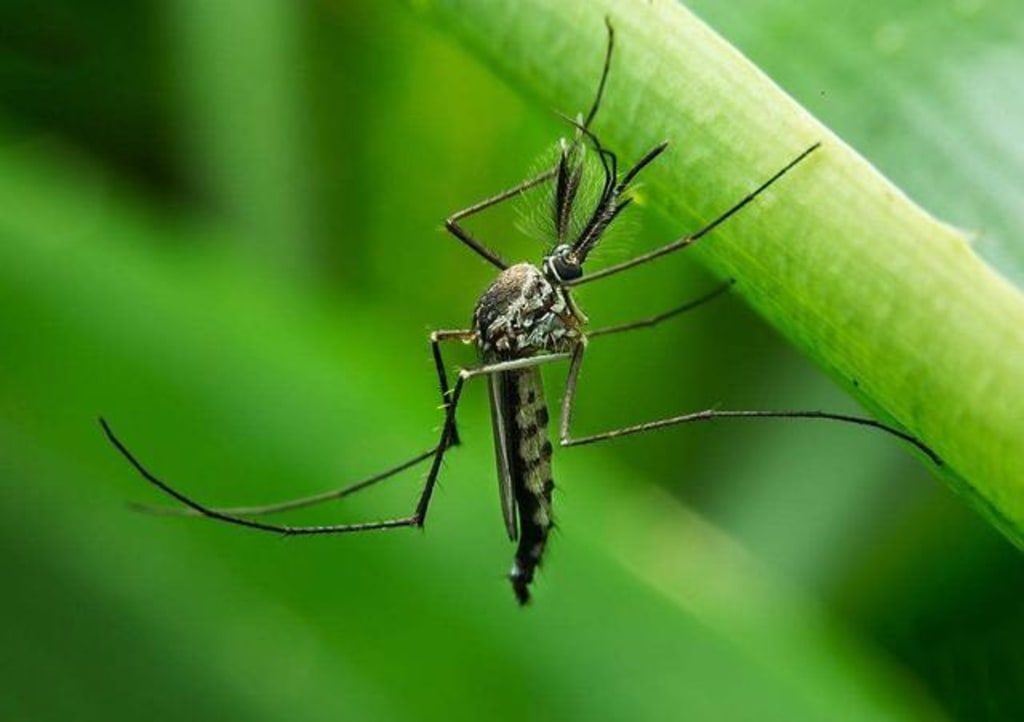"Monogamy" or "polygamy" is better? Scientists: the former may lead to animal extinction
"Monogamy" or "polygamy" is better?

The most common form of reproduction in nature is sexual reproduction, in which the germ cells of both sexes are brought together to develop into new individuals. This method has many advantages, such as promoting the spread of favorable genetic mutations within a population, accelerating the evolution of the species, and enhancing the ability of individuals in the population to adapt to their environment, which can be beneficial for the survival of the species. Sometimes, some scientists may go the other way and can use sexual reproduction to bring down the population size of some species.
During this time, you may have seen the news that the United States has begun releasing genetically modified mosquitoes in Florida. This pilot project is a joint initiative of the Florida Keys and the British biotechnology company OxITEC, and according to the plan, the U.S. expects to release more than 1 billion genetically modified mosquitoes in the two states. There may be some friends feel confused, mosquitoes bite people, spread disease, but the United States released so many mosquitoes, what is going on? The original, these releases are male mosquitoes, they are genetically edited and wild female mosquitoes after mating only male mosquitoes, and male mosquitoes are not biting people. In theory, as these genetically edited male mosquitoes are released, the number of female mosquitoes in the wild will drop significantly.
Could "monogamy" lead to animal extinction?
In addition to artificial gene editing to control species populations, scientists have found that the way species compete and select during reproduction in their natural state may have a significant impact on the risk of extinction of these species, and different approaches may lead to the extinction of animal species.
According to the study, published in Global Change Biology, researchers used Tribolium castaneum as a study subject and subjected these red mammals to "monogamy" (i.e., one male and one female per red mammal) and "polygyny" (one female per male). The study was conducted to examine the ability of different mating patterns to cope with the survival environment.
After 10 years of evolution in the laboratory and 95 generations of different mating patterns, researchers simulated the environment facing today's biodiversity in the laboratory and looked at how the last 15 generations of red mammoths have coped with different environments. It was found that the monogamous model had a declining ability to cope with the environment, and the population declined and was extinct by the end of the experiment; the polygamous model had a declining population, but at a slow rate, with 60% of the population surviving at the end of the experiment. The researchers believe that in the "polygamous" model, females have more opportunities to choose their mates, and through reproductive competition, they are able to remove some undesirable genes and pass on some good ones. In the end, the "polygamous" model will give the red mammoths a stronger ability to cope with the harsh environment.
Inspiration
Many species on Earth are now on the verge of extinction, such as the ibis, which was once threatened with extinction but has since grown significantly in population size. The ibis is a medium-sized wading bird, they inhabit streams in swamps, rice paddies and other areas, mainly fish, crabs, frogs, snails and other aquatic animals and insects for food. They are monogamous animals and there were only seven of them when they were discovered in 1981. With such a small population size, they may disappear from the earth at any time.
In order to protect these last remaining also ibis, a series of conservation and rescue measures have been taken. In addition to in situ conservation, the ibis population has been restored through artificial breeding techniques, and in 1989 the world's first artificial breeding of the ibis was successful at the Beijing Zoo. After many years of capacity, the number of ibis has grown from seven in 1981 to more than a thousand now, and the ibis has been "reborn".
In addition to the ibis, there are many species that continue to be saved. If they are left to breed naturally in their natural state, it may be difficult to restore the population size in a short period of time, but with the help of techniques such as artificial breeding, allowing these endangered species to combine with different individuals for better genetic exchange may be twice as effective.
About the Creator
nally norris
Science needs fantasy, invention is expensive
Enjoyed the story? Support the Creator.
Subscribe for free to receive all their stories in your feed.






Comments
There are no comments for this story
Be the first to respond and start the conversation.